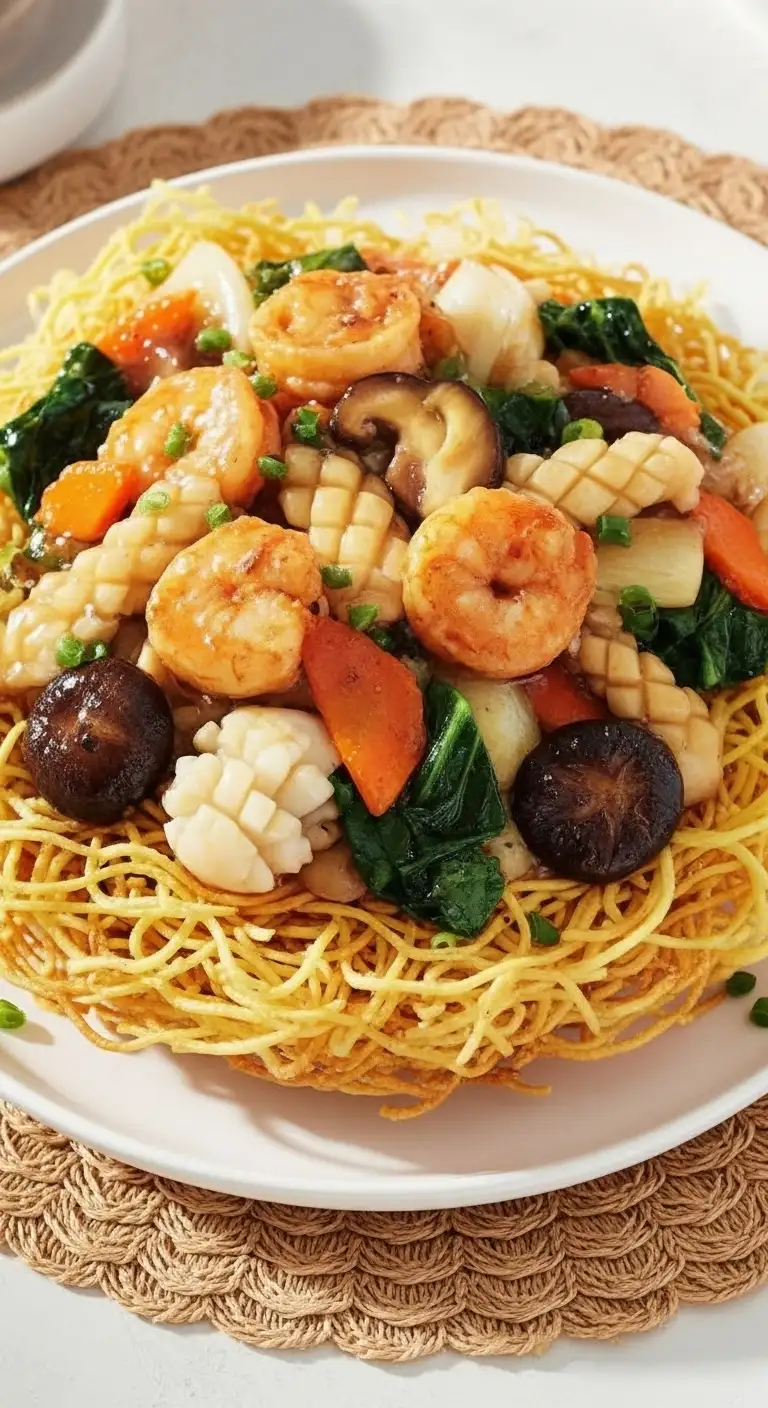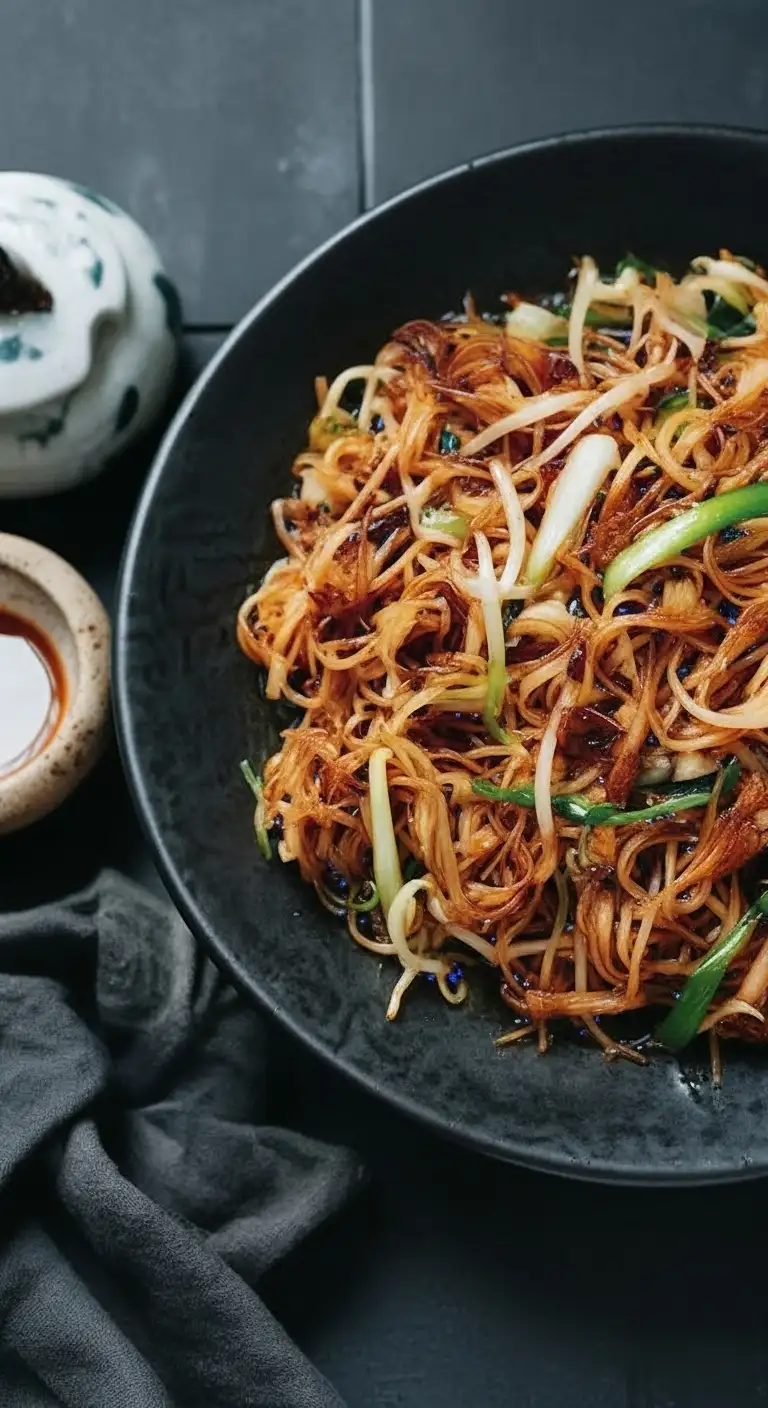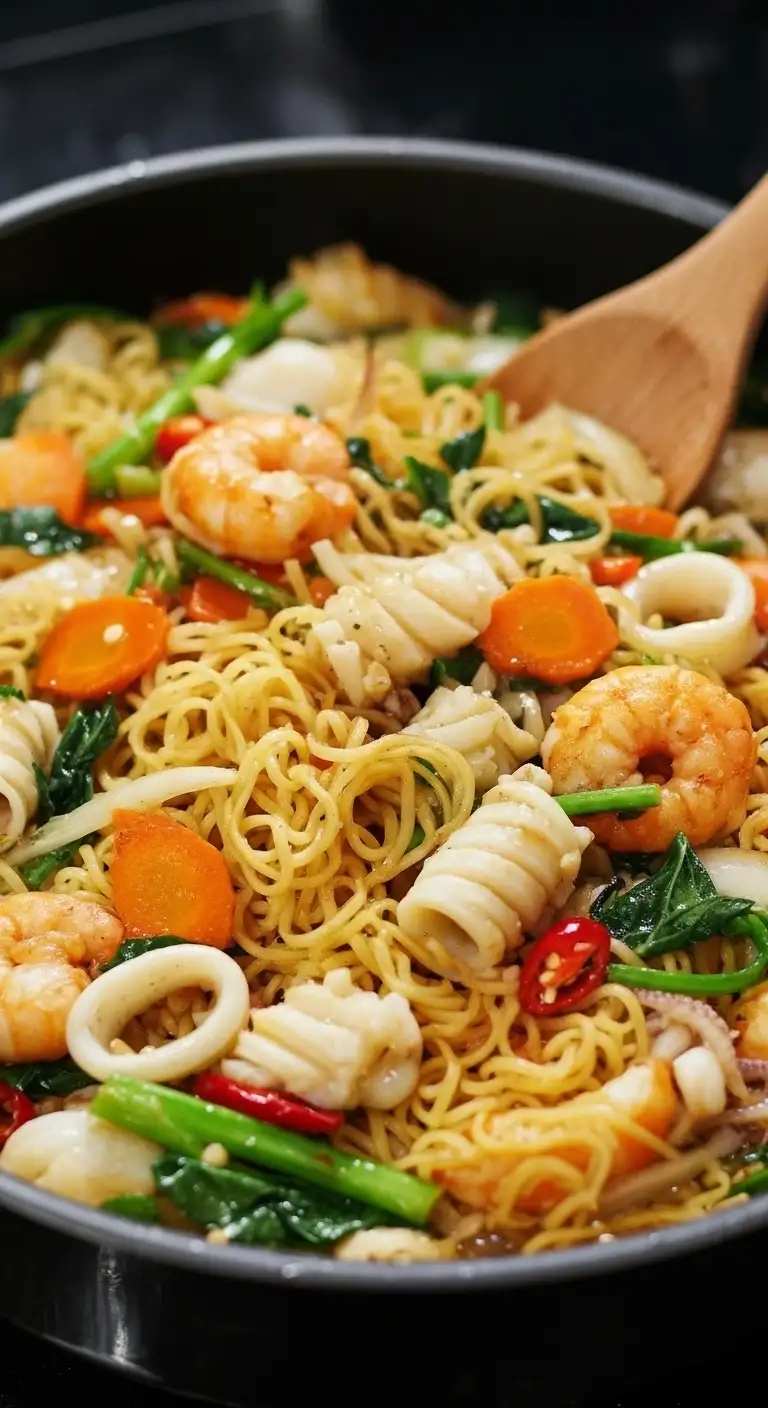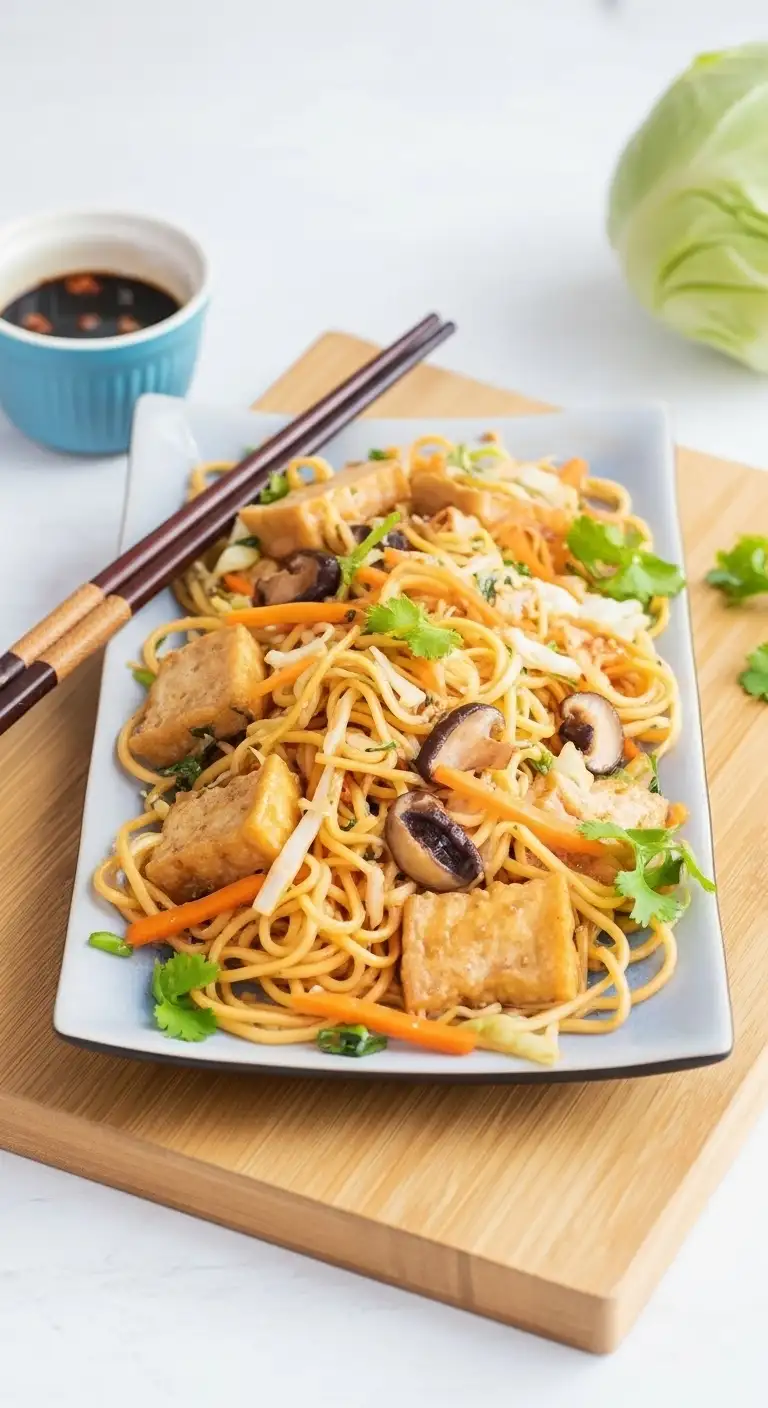Mì Xào (pronounced “Mee Sow”) literally translates to “stir-fried noodles,” and it is one of the most versatile and universally loved dishes in Vietnamese cuisine. While heavily influenced by Chinese cooking techniques, the Vietnamese version is celebrated for its fresh ingredients, lighter sauces, and vibrant balance of textures and flavors.
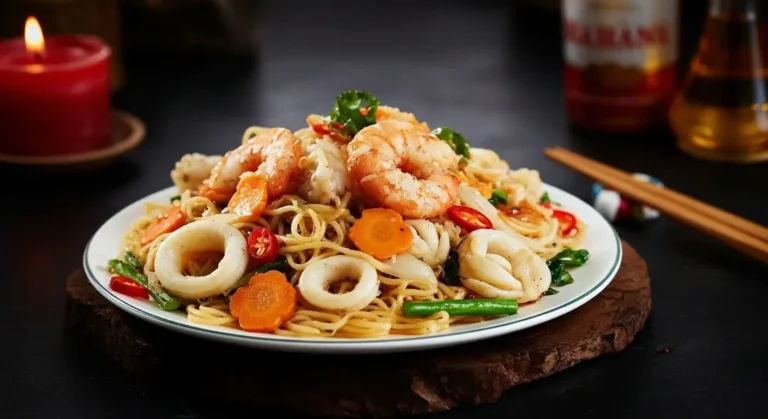
Mì Xào: The Basics
The Noodle (Mì): The dish primarily uses yellow egg noodles (similar to Chinese chow mein noodles). These noodles are typically par-boiled first, then stir-fried until they achieve one of two popular textures: soft or crispy.
The Protein: Mì Xào is highly adaptable and features a variety of proteins, often mixed together. Common choices include:
Beef (Bò): Thinly sliced and marinated.
Seafood (Hải Sản): Shrimp, squid, and sometimes scallops.
Chicken (Gà): Sliced chicken breast or thigh.
Pork (Heo): Often used in the form of thinly sliced roast pork (xá xíu).
The Vegetables: A colorful medley of fresh, crisp vegetables is essential. Typical ingredients are carrots, onions, cabbage, bok choy, broccoli, and sometimes baby corn or mushrooms. The key is to stir-fry them quickly so they remain crisp-tender.
The Sauce: The savory sauce is a light gravy, usually based on a combination of oyster sauce, soy sauce, chicken broth, a little sugar, and thickened with cornstarch or tapioca starch to give it a glossy coat.
Types and Styles of Mì Xào
The dish is generally categorized based on the texture of the egg noodles:
Mì Xào Mềm (Soft Stir-fried Noodles):
Preparation: The egg noodles are briefly par-boiled and then tossed directly into the wok with the protein, vegetables, and sauce.
Texture: The noodles are soft, supple, and fully coated and infused with the flavor of the sauce. This style is often compared to a classic chow mein.
Mì Xào Giòn (Crispy Stir-fried Noodles):
Preparation: The par-boiled egg noodles are deep-fried or pan-fried in a “nest” shape until they are golden brown and perfectly crispy. The stir-fry mixture (protein, vegetables, and sauce) is cooked separately.
Texture: This variation provides an exciting contrast: the ultra-crunchy, brittle fried noodle base topped with the soft, saucy, hot stir-fry topping. The noodles slowly absorb the sauce as you eat, changing from crunchy to delightfully chewy.
Mì Xào Thập Cẩm (Combination Stir-fried Noodles):
This is the most popular choice at restaurants, featuring a mix of proteins, typically beef, shrimp, and squid, combined with a wide variety of vegetables.
Mì Xào Chay (Vegetarian Stir-fried Noodles):
Features tofu or seitan as the protein and relies on mushrooms and a soy-based sauce (instead of oyster sauce) for its deep flavor.

How to Eat Mì Xào
Mì Xào is a complete, one-dish meal that is simple to enjoy, though it is often customized with local condiments.
For Mì Xào Giòn (Crispy):
Begin by breaking the crispy noodle nest with your chopsticks and mixing the pieces into the sauce.
The contrasting textures—the crunch of the noodles, the crispness of the vegetables, and the tender protein—are the highlight.
For Both Styles:
Condiments: The dish is usually served with a side of soy sauce (nước tương) and/or chili sauce (tương ớt), sometimes with sliced fresh chili or pickled chili for an extra kick.
Customize: Dip pieces of meat or noodles into the side sauce to adjust the saltiness and heat to your preference. Unlike soup dishes like Phở, the seasoning is generally not added directly to the main dish but used as a dip.
Enjoy Immediately: Mì Xào, especially the crispy version, is best eaten immediately while the noodles are still hot and either soft or perfectly brittle.
Regional Differences
Mì Xào is a common dish across Vietnam, but the regional styles of seasoning and ingredients influence its final taste.
| Region | Regional Culinary Style | Mì Xào Interpretation | Local Perspective |
|---|---|---|---|
| Northern Vietnam (Hanoi) | Subtle, balanced, and focused on the natural flavor of the fresh ingredients. | Milder Flavor. The sauce tends to be less sweet and less oily, relying more on light soy sauce and broth for seasoning. The protein selection might be slightly simpler, emphasizing chicken or beef. | It's a satisfying, home-style meal, generally adhering to a more balanced profile without excessive sweetness or richness. |
| Central Vietnam | Bolder, spicier, and often more concentrated/rich in flavor. | Spicier & Richer. Central Vietnamese Mì Xào might incorporate more chili and strong aromatics. In coastal areas like Da Nang, the seafood variation (Mì Xào Hải Sản) is particularly prominent and fresh. | The dish adapts to the region's preference for complex, strong flavors, often served with extra chili sauce on the side. |
| Southern Vietnam (Ho Chi Minh City) | Sweeter, richer, and more generous with portions and ingredients. | Sweeter Sauce & Abundant Toppings. Reflecting the Southern palate, the sauce is often slightly sweeter due to a higher use of sugar in the stir-fry. Portions are typically generous, with a mix of char siu pork, beef, and seafood readily available. | It is often seen as a hearty and complete meal, often utilizing a wider variety of ingredients influenced by the region's diverse culinary scene. |

